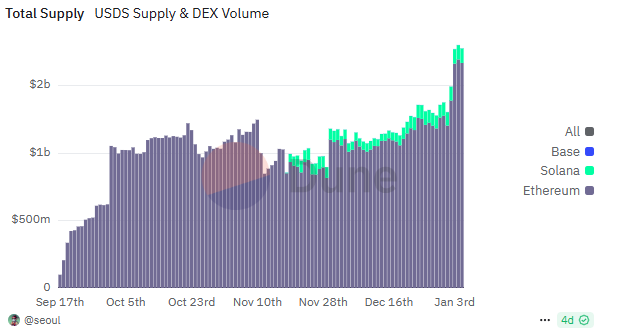FIREFIGHTERS MAKE GAINS BUT STRONG WINDS THREATEN PROGRESS
Firefighters battling Los Angeles County wildfires made progress but face renewed challenges as strong winds are forecast to intensify. The fires, which have devastated iconic neighborhoods, killed 10 people, and destroyed nearly 10,000 structures, are among the most destructive in LA’s history. The Palisades and Eaton Fires have consumed over 34,000 acres, while the Kenneth Fire near Calabasas is 35% contained. Despite brief relief, red flag warnings persist. President Biden declared a major disaster, pledging federal support for recovery costs. Damages are estimated at $135–$150 billion, with concerns of inequitable recovery in diverse communities. Celebrities, including Paris Hilton, lost homes, fueling concerns about resource allocation. Meanwhile, the Sunset Fire in the Hollywood Hills is fully contained. Officials are implementing curfews and have arrested 20 looters, as efforts continue to safeguard communities and critical infrastructure amidst the devastation. (Reuters)
EMERGING RESISTANCE THREATENS GAME-CHANGING MDR-TB TREATMENT STRATEGY
A new study highlights the emergence and spread of resistance to the shorter, less toxic BPaL/M regimen for multidrug-resistant tuberculosis (MDR-TB). Genomic analysis of *Mycobacterium tuberculosis* from 27 countries identified over 500 strains resistant to at least one BPaL/M drug, with more than a quarter linked to patient-to-patient transmission. BPaL/M, endorsed by the WHO in 2022, offers a 6-month, all-oral treatment with a 90% cure rate compared to the previous 15-month regimen’s sub-50% rate. However, the study found strains classified as “totally drug-resistant” in Belarus, Georgia, India, and South Africa, raising concerns about the regimen’s durability. While cases remain low, researchers warn that resistance could undermine global rollout efforts. Improved diagnostic tools, infection control, and surveillance are critical to preserving the regimen’s efficacy. The WHO estimates 400,000 MDR-TB cases in 2023, with hopes that wider adoption of BPaL/M will enhance patient outcomes by 2026. (CIDRAP)
ANCIENT “PUNK” FOSSILS REVEAL MOLLUSK EVOLUTIONARY DIVERSITY
Imperial College London paleontologist Mark Sutton and colleagues have uncovered two fossil mollusk species with striking spikes, which they’ve nicknamed “Punk ferox” and “Emo vorticaudum” for their resemblance to punk and emo hairstyles. These ancient worm-mollusks, dating back nearly 200 million years before dinosaurs, offer a rare glimpse into the evolution of mollusks, particularly the lesser-known aculiferan branch. Traditionally viewed as less diverse than their conchiferan relatives (e.g., snails and clams), Punk and Emo challenge this notion with their unique appearances. The fossils, found at a site between England and Wales, were meticulously reconstructed by digitally combining thousands of manually sliced images. Their discovery reveals the unexpected evolutionary diversity of early mollusks and raises questions about why aculiferans are now a minor mollusk group. Smithsonian curator Stewart Edie calls these findings a breakthrough, offering an unprecedented view of mollusk evolution during their early history. (New York Times)
WORLD’S LARGEST BLOOD PROTEIN STUDY AIMS TO TRANSFORM MEDICINE
Scientists are launching the world’s largest study of proteins in human blood, aiming to analyze levels of 5,400 proteins from 500,000 participants in the UK Biobank. The project, backed by major pharmaceutical companies, will create a first-of-its-kind database linking protein changes over time to disease development. Initial analyses of 300,000 samples will take a year, with an exclusive nine-month access period for the funders before wider availability to researchers. Previous proteomic studies by the UK Biobank identified 14,000 genetic-protein associations, leading to breakthroughs in identifying biomarkers and drug targets for diseases like breast cancer and Parkinson’s. This next phase will expand data collection tenfold, including follow-up samples from 100,000 participants up to 15 years apart, offering deeper insights into less-studied diseases. While limitations like a predominantly European dataset exist, experts anticipate transformative advances in early disease detection and treatment development, calling the resource invaluable for global health research. (Science)

PHYSICISTS REVEAL NEW PARTICLES CHALLENGING QUANTUM PHYSICS RULES
Physicists have proposed a new class of particles, “paraparticles,” that defy conventional classifications of fermions and bosons. Detailed in Nature, these particles obey unique quantum rules and could exist in any dimension, potentially offering new insights into quantum computing. Paraparticles share some properties with fermions, like a modified exclusion principle, but differ significantly, presenting exciting possibilities for future experiments, particularly using quantum computers. Separately, *Science* reported the first creation of “anyons” in a one-dimensional system. Previously observed only in two dimensions, these exotic particles’ wavefunctions “remember” particle exchanges, a property that could make quantum computers less error-prone. Using rubidium-87 atoms suspended in light waves, researchers demonstrated the unique twisting wavefunctions of anyons in 1D. While paraparticles and anyons represent distinct phenomena, both challenge traditional particle physics. Paraparticles, potentially existing in 3D, could include undiscovered elementary particles, while anyons’ memory-like properties could revolutionize quantum information storage and processing. (Nature)
PLUTO-CHARON COLLISION THEORY REVEALS ORIGIN OF UNIQUE MOON
A NASA researcher at the Southwest Research Institute has used advanced simulations to propose that Pluto and its moon Charon formed through a collision similar to the Earth-Moon system. Unlike most moons, Charon is unusually large relative to Pluto. The study, published in *Nature Geoscience*, suggests that a “kiss-and-capture” collision occurred, where two icy, rocky bodies briefly joined before separating, resulting in Charon’s stable orbit. New models incorporate material strength, showing Pluto with a rocky core and icy mantle, leading to a more nuanced understanding of the collision. The event likely exchanged material between Pluto and Charon, influencing their distinct compositions. This scenario also explains Pluto’s smaller moons and supports theories of subsurface oceans and active geology. The timing of the collision remains unknown, but the findings have implications for the Kuiper Belt, as many large objects there share characteristics with Pluto and Charon, hinting at similar formation histories. (Space Daily)
AMATEUR ASTRONOMER CHALLENGES JUPITER CLOUD COMPOSITION THEORY
Amateur astronomer Steve Hill and physicist Patrick Irwin have overturned the long-standing belief that Jupiter’s clouds are primarily composed of frozen ammonia. Using band-depth analysis, a method based on light absorption, Hill mapped ammonia distribution in Jupiter’s atmosphere. Surprisingly, the data showed the clouds form at depths and pressures too high for ammonia condensation. Instead, the clouds are likely made of ammonium hydrosulfide or products of complex photochemical reactions. Validated through comparisons with advanced data from NASA’s Juno mission and the Very Large Telescope, the findings reveal ammonia ice clouds are rare and limited to areas of rapid convection. This breakthrough also suggests similar processes occur on Saturn, as recent observations indicate deeper-than-expected cloud layers on both planets. The study underscores the collaborative power of amateur and professional astronomers, reshaping our understanding of gas giants’ atmospheres and opening new doors for planetary weather and chemistry research. (space.com)
BEPI COLOMBO CAPTURES STUNNING CLOSE-UPS OF MERCURY’S POLES
The BepiColombo spacecraft, a joint mission by the European and Japanese space agencies, has sent back stunning close-up images of Mercury’s north pole. During its sixth and final flyby, the spacecraft passed just 183 miles (295 kilometers) above Mercury’s night side, capturing detailed views of the planet’s permanently shadowed craters, volcanic plains, and its largest impact crater, spanning over 930 miles (1,500 kilometers). Launched in 2018, BepiColombo is now on course to enter orbit around Mercury in late 2025. It carries two orbiters—one European, one Japanese—that will study the planet’s poles. The mission honors Giuseppe (Bepi) Colombo, an Italian mathematician known for his contributions to NASA’s Mariner 10 mission and other space projects. These new images offer unprecedented insights into Mercury’s geology, paving the way for a deeper understanding of the solar system’s smallest and innermost planet. (AP)
TESCO DATA REVEALS HARD BOILED EGGS OVERTAKES CRISPS IN SALES
Tesco’s 2024 meal deal data revealed a surprising shift in snack preferences: McCoy’s flame-grilled steak crisps lost their top spot to the “egg protein pot.” This simple snack—two cooked and peeled eggs in a plastic tub—has seen demand double since 2020, with Tesco selling 10 million last year. Other retailers like Waitrose and Pret a Manger report similar surges, attributing the trend to a growing desire for high-protein, minimally processed foods. Experts link the egg pot’s success to its clean-label appeal and protein content, with a typical pot providing around 11g of protein—about a quarter of the daily recommended intake for a 60kg adult. Nutritionist Alexa Mullane notes eggs’ additional cognitive benefits, making them a popular choice for healthier, sustaining lunches. Despite this trend, crisps remain dominant as a category, valued for their salty indulgence, proving there’s room for both traditional and health-conscious snacks in shoppers’ baskets. (The Guardian)
Thanks for reading. Let’s be careful out there.
WORDS: The Biology Guy.
IMAGE CREDIT: Grigory Heaton.
Southern California wildfires caused extensive destruction, claiming lives and properties, affecting diverse …
Research links ancient lead pollution from the Roman Empire to cognitive decline, …








Leave a Comment